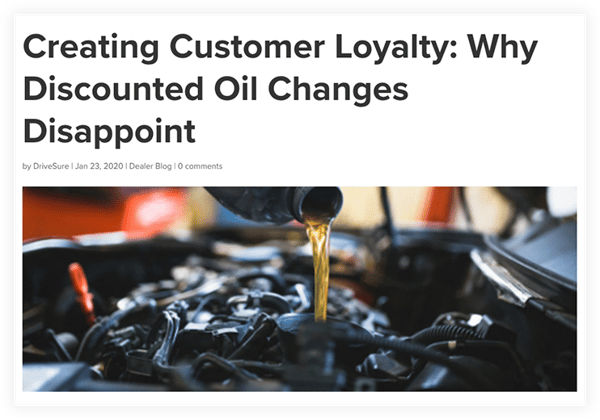What Do Content Marketing Leaders Care About Today?

Table of Contents
In some ways, the fundamentals of content marketing haven’t changed much since Benjamin Franklin published his almanac to promote his printing business. The idea of educating, entertaining and inspiring people to attract them to your company is still at the heart of it all, but so many new distribution channels and content marketing trends have emerged within the past decade that marketers can get whiplash trying to keep up with it all.
The best content marketing leaders have the ability to stay focused on what matters most when it comes to engaging with their audience and reaching their company’s goals. While they’re always experimenting with new ways to do that, they make sure any new tactics or trends support their overall strategy.
So how are they spending their time and budget today, and where do they expect to invest it in the coming year?
Here are some of the best insights we heard at this year’s Content Marketing World in Cleveland and beyond.
Content Marketing Insights From Top Leaders
Data is driving content strategy more than ever
Data has always been an important element of monitoring the success of any marketing initiative, but smart content marketing leaders are going beyond analyzing it in monthly reports. They’re using data to gain a deeper understanding of what their customers actually want and quickly pivot their strategy accordingly.
 Christy Hajoway, a supervisor of digital communications for First Energy, and her team manage 11 brands that collectively serve more than six million customers.
Christy Hajoway, a supervisor of digital communications for First Energy, and her team manage 11 brands that collectively serve more than six million customers.
The company considers what they learn from web metrics, focus groups and surveys as they plan email marketing and social media calendars, and will be investing more in customer segmentation as part of their digital strategy over the next year.
While First Energy still sees the most engagement on Facebook because they serve customers of all ages, they’re investing more heavily in boosted posts and paid ads to supplement their organic reach. They’ve also seen more success reaching younger audiences on Snapchat with messaging about hiring, billing assistance and safety.
They recently hired their first social media analyst too.
“We recognized this is a full-time job,” Hajoway said. “We want to create a meaningful reporting framework to identify results, conversations and trends in customers’ concerns so that we can give customers what they need through the right digital touchpoints and even through stories placed in traditional media.”
Content marketing leaders are fine-tuning the fundamentals
 When Stephanie McColly started her new role as chief marketing officer for Crestwood Associates, an ERP implementation and advisory firm in early 2022, she realized she needed to start by building a strong foundation.
When Stephanie McColly started her new role as chief marketing officer for Crestwood Associates, an ERP implementation and advisory firm in early 2022, she realized she needed to start by building a strong foundation.
“We really had to create a consistent, quality brand strategy,” she said. “Educating people on the ERP space has been incredibly profound and significant.”
They’ve done this by developing several strong case studies, including one for a surfboard company that attracted a lot of attention because of its laid-back vibe, readable tone and pace and significant results. They also started creating more intentional, optimized blogs with the goal of increasing organic traffic and tested digital ads on several platforms, including Facebook, YouTube and LinkedIn.
In the coming year, the team plans to focus more on analytics and doubling down on what’s working. They want to take a deep dive into their customers’ journeys to see how much research they’re doing (and what’s catching their attention) before they contact someone.
Once they have a better idea of that, they’ll turn their attention to improving the user experience on their website and developing better integrations between HubSpot, their content management system and their own ERP system.
“Marketing is just a series of fine-tuning the basics,” she said.
Content marketing is becoming more focused and strategic
In the earlier days of content marketing as we know it, there was more focus on speed and consistency. Just start putting content out there, content marketing thought leaders said. See what works and go from there.
And for a while, that actually worked pretty well. A mediocre 300-word post with little or no keyword strategy could rank highly for something if no one else had published anything on that topic. Those days are over. So many companies have been publishing content for some time, and there’s so much more competition.
Content marketing leaders realize they have to be smarter about what they produce and why.
 “We’re trying to be much more proactive with our content creation instead of reactive,” said Brian Piper, director of content strategy at the University of Rochester and co-author of Epic Content Marketing with Joe Pulizzi, at Content Marketing World.
“We’re trying to be much more proactive with our content creation instead of reactive,” said Brian Piper, director of content strategy at the University of Rochester and co-author of Epic Content Marketing with Joe Pulizzi, at Content Marketing World.
“In the past, we’ve put out content and then gone back to see why it was working. Now, we’re actually looking at trending topics. We’re looking at highly-searched keywords and figuring out where our strategies align with those topics. Then we’re creating content around those that are answering questions that our users have and then tying those to our strategic goals.”
One example is focusing on topics related to the university’s research, he said. That has resulted in a significant increase in organic traffic, which led to more collaboration with other peer institutions on research projects and more interest from graduate students looking to do research in those fields.
Building communities has become its own content marketing strategy
You already know your best brand ambassadors are your own customers. Creating a community where they can have honest conversations with each other and their peers who share common interests creates invaluable connections, said Kristin Twiford, director of content and brand for Nines.
Early in her previous role at PhotoShelter, a digital asset management platform, Twiford recognized that what her photographer customers wanted most was to learn from other photographers.
She started with a video series that evolved into a monthly webinar, then a virtual event with 22 speakers and a dedicated Slack channel during the early days of the pandemic.
In her new role, marketing household management software to estate managers, she realized these individuals didn’t have anywhere to connect with others in an industry where discretion is paramount. She started a community called Easemakers just for them by sending personal invitations through LinkedIn. She also developed a podcast as a way to bring new members into the community. Today, Easemakers has over 450 members and is responsible for 20% of Nines’ deals. They share a weekly welcome post for new members and send a weekly newsletter, but otherwise, Twiford and her team don’t spend a lot of time on content marketing; the community runs itself.
“If you can foster a community around things your audience cares about, they’ll be much more likely to become brand ambassadors,” Twiford said. “This is a lifeline you can have to create better content.”
While you shouldn’t talk about your product in the community, your customers inevitably will. This creates a consistent feedback loop where you can see honest conversations they’re having and respond quickly.
Original research is a top priority for content marketing leaders
Having an SEO strategy is critical, but it’s not the same as having a content strategy. Having a unique angle and something original to contribute to the conversation will help your brand stand out in a sea of sameness. Using research to create original content is one of the best ways to do that. Several content marketing leaders at CMW shared their success in using surveys to create a year’s worth of content, including Julia Gaynor, senior content manager at ezCater.com.
Gaynor saw huge success conducting a jobs survey for Monster.com. The Monster Job Index drove more than half of the company’s media coverage in 2020, resulting in a significant increase in website traffic.
At ezCater, Gaynor tried a similar approach with a survey about how often professionals across different ages and industries take lunch breaks.
She used that original research to develop a report, along with blogs, videos and media pitches that resulted in news stories.
“Anyone can do what we did,” she said. “You just need to think about who’s (your) audience, what do (you) have that other people want, how can (you) get that data, who can (you) collaborate with, and how can (you) promote it?”
Leaders are fighting digital fatigue with shorter, more interactive content
Many B2B marketing leaders can probably relate to Nisha Menezes, principal content strategist at Atlassian. Her team and her customers had been experiencing “digital fatigue” for a long time, and the pandemic only made it worse. She realized she had to find new ways to engage with them online.
“We’re really good at publishing 80-page whitepapers, but no one is reading them and it takes so much time to produce them,” she said during a panel about content marketing trends during the Content Marketing World conference. “So how do you flip the script?”
Menezes found success using micropublishing platforms that allowed them to turn static PDFs into swipeable, interactive experiences or actual microsites.
The platforms give them much more visibility into how much time readers spend on each page, where they’re clicking and where they may be dropping off.
Short videos are also doing well for many content marketing leaders. Salesforce uses them to increase engagement and brand awareness on their social media channels.
One example was a recent video where a team member asked conference attendees what they thought “CDP” stood for. (No, it’s not a customer dance party.) The video was less than a minute long, shot with a smartphone, and brought in more than 5 million views.
The company is now offering direct-to-consumer video and live streaming services along with AWS and experimenting with this themselves.
 More leaders are also experimenting with podcasts, although it’s still relatively new territory compared to blogging and other, more conventional content marketing tactics.
More leaders are also experimenting with podcasts, although it’s still relatively new territory compared to blogging and other, more conventional content marketing tactics.
That means it’s still a great way for brands to stand out, said Rob Walch, VP of podcaster relations for Libsyn.
“For every 2,000 bloggers, there’s only one podcaster. So to put that in perspective, if you filled Madison Square Garden up, there would be 10 podcasters and they would be the ones on the floor and all the bloggers would be filling up the stands. Where do you want to be — on the floor or in the stands?”
What Are Your Content Marketing Priorities?
While these insights are great for inspiration, every brand and industry is unique. Every great content marketing leader needs the fundamentals that make up a solid marketing strategy: a memorable brand story and value proposition, a deep understanding of your customers, a commitment to content that engages and data that allows you to adjust as you learn more.
That’s why our approach to content marketing is different for every client. For a large food services and facilities management provider, we’ve seen great engagement by developing interactive reports from the company’s original research. For manufacturers of custom products, focusing on SEO fundamentals can significantly improve website traffic while sales enablement email workflows help to close deals. With software solutions, strong comparison pieces can cut a long sales cycle in half.
Our full-service team can help you develop the best strategy to reach your goals — not only with content marketing, but with branding, digital advertising, video marketing and much more.
Let’s start the conversation.









